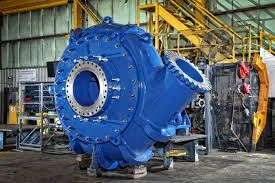English
- Afrikaans
- Albanian
- Amharic
- Arabic
- Armenian
- Azerbaijani
- Basque
- Belarusian
- Bengali
- Bosnian
- Bulgarian
- Catalan
- Cebuano
- Corsican
- Croatian
- Czech
- Danish
- Dutch
- English
- Esperanto
- Estonian
- Finnish
- French
- Frisian
- Galician
- Georgian
- German
- Greek
- Gujarati
- Haitian Creole
- hausa
- hawaiian
- Hebrew
- Hindi
- Miao
- Hungarian
- Icelandic
- igbo
- Indonesian
- irish
- Italian
- Japanese
- Javanese
- Kannada
- kazakh
- Khmer
- Rwandese
- Korean
- Kurdish
- Kyrgyz
- Lao
- Latin
- Latvian
- Lithuanian
- Luxembourgish
- Macedonian
- Malgashi
- Malay
- Malayalam
- Maltese
- Maori
- Marathi
- Mongolian
- Myanmar
- Nepali
- Norwegian
- Norwegian
- Occitan
- Pashto
- Persian
- Polish
- Portuguese
- Punjabi
- Romanian
- Russian
- Samoan
- Scottish Gaelic
- Serbian
- Sesotho
- Shona
- Sindhi
- Sinhala
- Slovak
- Slovenian
- Somali
- Spanish
- Sundanese
- Swahili
- Swedish
- Tagalog
- Tajik
- Tamil
- Tatar
- Telugu
- Thai
- Turkish
- Turkmen
- Ukrainian
- Urdu
- Uighur
- Uzbek
- Vietnamese
- Welsh
- Bantu
- Yiddish
- Yoruba
- Zulu
Telephone: +86 13120555503
Email: frank@cypump.com
Dec . 04, 2024 18:35 Back to list
sewage ejector pump replacement
Sewage Ejector Pump Replacement A Comprehensive Guide
Sewage ejector pumps play a crucial role in the plumbing systems of many homes, particularly those situated below the level of the municipal sewer line. These pumps are responsible for moving sewage and wastewater from lower areas, such as basements and lower bathrooms, into the main sewer system. Over time, like any mechanical device, sewage ejector pumps can wear out or malfunction, necessitating replacement. If you're facing this situation, understanding the replacement process can save you time, money, and frustration.
Signs That Your Sewage Ejector Pump Needs Replacement
Before you decide to replace your sewage ejector pump, it’s essential to identify the signs indicating a replacement may be necessary. Common indicators include
1. Unusual Noises If your pump begins making loud or unusual noises, it may be a sign that the motor or motor bearings are failing. 2. Frequent Cycling If the pump is turning on and off frequently (short cycling), it may indicate that the pump is overwhelmed or malfunctioning. 3. Failure to Start A pump that doesn't respond when activated could indicate a damaged motor or electrical issues. 4. Foul Odors A sewage backup can lead to unpleasant odors. If you experience persistent foul smells, your pump may be clogged or failing. 5. Visible Damage Checking the pump for any visible cracks, rust, or other damage can indicate it's time for a new pump.
Choosing the Right Replacement Pump
When it comes to selecting a replacement sewage ejector pump, several factors should be considered
- Pump Type There are different types of sewage ejector pumps, including those designed for residential and commercial use. Ensure that the model you choose fits your specific needs. - Horsepower The horsepower of the pump should match or exceed the requirements of your sewage system to effectively manage the waste flow. - Durability and Materials Look for models made with corrosion-resistant materials, as they will typically last longer, especially in harsh environments. - Brand Reputation Research reputable brands and read reviews to ensure you select a reliable product.
sewage ejector pump replacement

The Replacement Process
Replacing a sewage ejector pump can be a DIY project if you have some plumbing knowledge, but it's often advisable to hire a professional plumber. Here’s a brief overview of the steps involved in the replacement process
1. Safety First Always turn off the power to the pump and wear protective gear, including gloves and goggles. 2. Remove the Old Pump Disconnect the discharge pipe and electrical components before lifting the old pump out of its pit. Be prepared for possible sewage spills. 3. Clean the Pit Before installing the new pump, clean the pit to remove any debris or sludge that may have accumulated over time. 4. Install the New Pump Place the new pump into the pit, secure it as per the manufacturer's instructions, and connect the discharge pipe and electrical wiring. 5. Test the System Once everything is connected, restore power and perform a test to ensure the pump is operating correctly.
Maintenance Tips
After the new pump is installed, regular maintenance is crucial to extend its life. Schedule routine checks every six months or at least once a year. Inspect for clogs, ensure the float switch is functioning properly, and clean any buildup around the pump.
Conclusion
In summary, replacing a sewage ejector pump may seem daunting, but with the right knowledge and resources, it can be a manageable task. Keeping an eye out for signs of failure, selecting the appropriate replacement, and following proper installation procedures will ensure your home’s sewage system operates smoothly for years to come. If in doubt, do not hesitate to call in a professional to ensure the job is done safely and correctly.
-
ISG Series Pipeline Pump - Chi Yuan Pumps | High Efficiency, Durable Design
NewsAug.01,2025
-
Advanced Flue Gas Desulfurization Pump with GPT-4 Turbo | Durable & Efficient
NewsJul.31,2025
-
ISG Series Vertical Pipeline Pump - Chi Yuan Pumps | Advanced Hydraulic Design&Durable Construction
NewsJul.31,2025
-
ISG Series Vertical Pipeline Pump - Chi Yuan Pumps | Energy Efficient & Low Noise
NewsJul.31,2025
-
pipeline pump - Chi Yuan Pumps Co., LTD.|High Efficiency&Low Noise
NewsJul.31,2025
-
ISG Series Vertical Pipeline Pump - Chi Yuan Pumps Co., LTD.|High Efficiency, Energy Saving, Low Noise
NewsJul.30,2025










